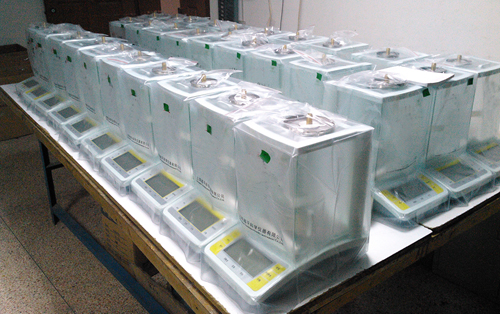
Electronic balance, used to weigh the mass of objects. Electronic balances generally use strain sensors, capacitive sensors, and electromagnetic balance sensors. Strain sensor has simple structure and low cost, but its accuracy is limited.
The precision of the electronic balance makes it easy for us to have various failures during use. Often the weighing result is unstable. Is it a problem with the electronic balance?
1 The water content of the sample increases or loses
The sample may be volatile or absorb moisture and cause the actual mass of the sample to increase or decrease. The solution to this situation is to use a vessel with a small opening. In this way, the moisture in the sample is not easy to volatilize, so that the weighing result is more accurate.
2 Electrostatic phenomenon of samples and containers
Electrostatic phenomena may also cause unstable weighing of electronic balances. Materials with high insulation (such as most glass or plastic weighing containers) are easily electrostaticized. At this time, we can consider using metal utensils to make the weighing Quantitative repeatability becomes better.
3 Magnetization of samples and containers
The magnetization of both the sample and the container can trick the balance into thinking that the magnetic force it is experiencing is due to the gravity of the sample. Therefore, when we use iron utensils, we must often perform demagnetization operations.
4 The position of the balance
The location of the balance is very important. It is best to place the electronic balance at a corner of the house, and it is best to have only one hole in the room, and close the door when in use. Electronic analytical balances generally have windshields, but if there is a wind blowing or the shaking of the laboratory bench, the readings of the electronic balance will be unstable. The position of the balance is placed correctly, which is equivalent to solving half of the electronic balance failure.
5 Temperature of sample and container
Temperature has a great influence on the weighing results of electronic balances, so the use of electronic balances generally requires working in a room with constant temperature, and the temperature of samples or containers in the laboratory may be too different from the ambient temperature of the electronic balance. And the reading is unstable. The balance generally has automatic calibration, and if the balance of an external school changes in temperature, manual calibration is required. This is also an important step in troubleshooting electronic balances.
